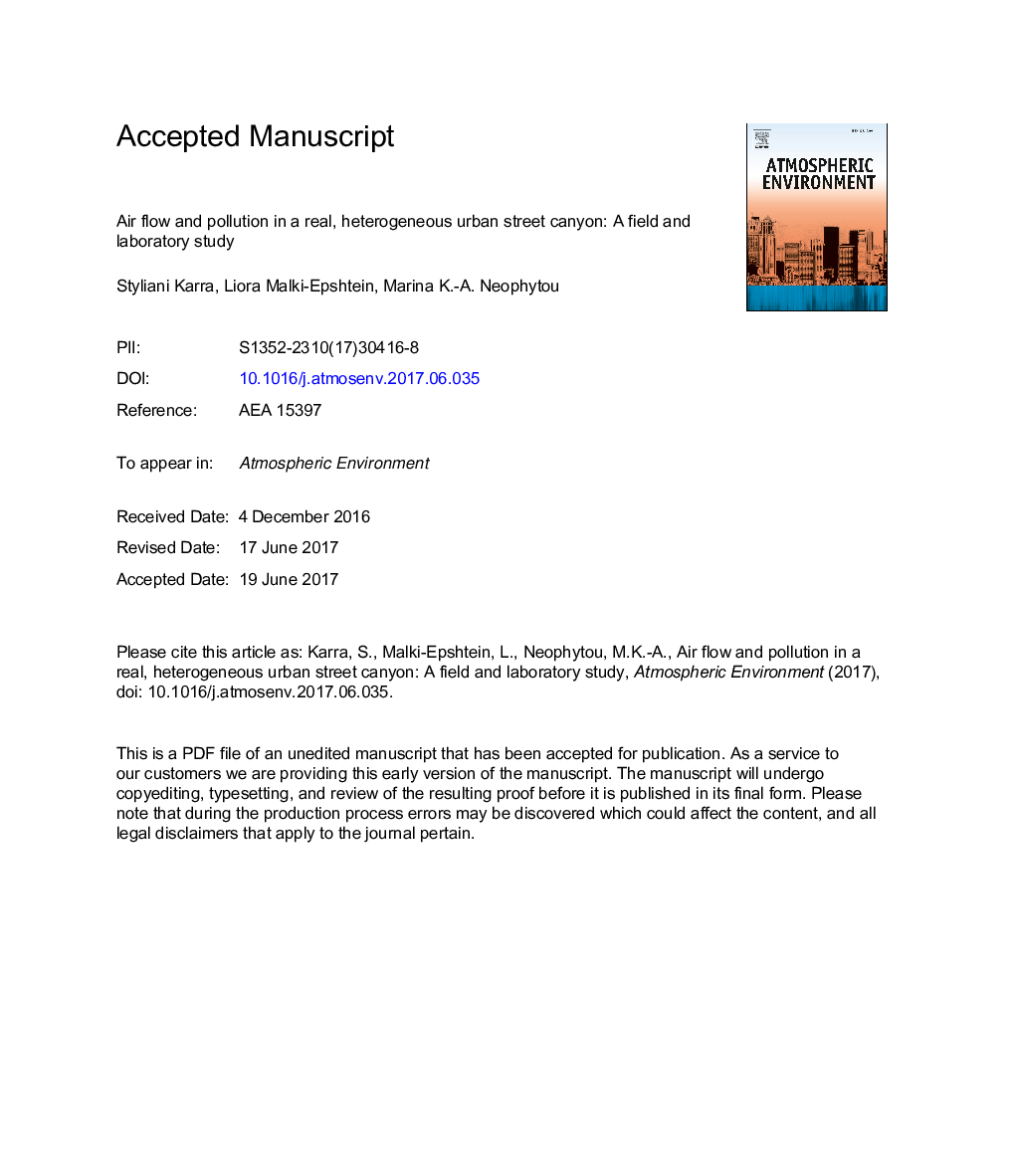| کد مقاله | کد نشریه | سال انتشار | مقاله انگلیسی | نسخه تمام متن |
|---|---|---|---|---|
| 5752934 | 1620309 | 2017 | 64 صفحه PDF | دانلود رایگان |
عنوان انگلیسی مقاله ISI
Air flow and pollution in a real, heterogeneous urban street canyon: A field and laboratory study
ترجمه فارسی عنوان
جریان هوا و آلودگی در یک کانال واقعی و ناهمگن خیابان شهری: یک مطالعه آزمایشگاهی و آزمایشگاهی
دانلود مقاله + سفارش ترجمه
دانلود مقاله ISI انگلیسی
رایگان برای ایرانیان
کلمات کلیدی
موضوعات مرتبط
مهندسی و علوم پایه
علوم زمین و سیارات
علم هواشناسی
چکیده انگلیسی
In this work we investigate the influence of real world conditions, including heterogeneity and natural variability of background wind, on the air flow and pollutant concentrations in a heterogeneous urban street canyon using both a series of field measurements and controlled laboratory experiments. Field measurements of wind velocities and Carbon Monoxide (CO) concentrations were taken under field conditions in a heterogeneous street in a city centre at several cross-sections along the length of the street (each cross-section being of different aspect ratio). The real field background wind was in fact observed to be highly variable and thus different Intensive Observation Periods (IOPs) represented by a different mean wind velocity and different wind variability were defined. Observed pollution concentrations reveal high sensitivity to local parameters: there is a bias towards the side closer to the traffic lane; higher concentrations are found in the centre of the street as compared to cross-sections closer to the junctions; higher concentrations are found at 1.5 height from the ground than at 2.5 m height, all of which are of concern regarding pedestrian exposure to traffic-related pollution. A physical model of the same street was produced for the purpose of laboratory experiments, making some geometrical simplifications of complex volumes and extrusions. The physical model was tested in an Atmospheric Boundary Layer water channel, using simultaneously Particle Image Velocimetry (PIV) and Planar Laser Induced Fluorescence (PLIF), for flow visualisation as well as for quantitative measurement of concentrations and flow velocities. The wind field conditions were represented by a steady mean approach velocity in the laboratory simulation (essentially representing periods of near-zero wind variability). The laboratory investigations showed a clear sensitivity of the resulting flow field to the local geometry and substantial three-dimensional flow patterns were observed throughout the modelled street. The real-field observations and the laboratory measurements were compared. Overall, we found that lower variability in the background wind does not necessarily ensure a better agreement between the airflow velocity measured in the field and in the lab. In fact, it was observed that in certain cross sections, the airflow was more affected by the particular complex architectural features such as building extrusions and balconies, which were not represented in the simplified physical model tested in the laboratory, than by the real wind field variability. For wind speed comparisons the most favourable agreement (36.6% of the compared values were within a factor of 2) was found in the case of lowest wind variability and in the section with the most simple geometry where the physical lab model was most similar to the real street. For wind direction comparisons the most favourable agreement (45.5% of the compared values was within ±45°) was found in the case with higher wind variability but in the cross-sections with more homogeneous geometrical features. Street canyons are often simplified in research and are often modelled as homogenous symmetrical canyons under steady flow, for practical purposes; our study as a whole demonstrates that natural variability and heterogeneity play a large role in how pollution disperses throughout the street, and therefore further detail in models is vital to understand real world conditions.
ناشر
Database: Elsevier - ScienceDirect (ساینس دایرکت)
Journal: Atmospheric Environment - Volume 165, September 2017, Pages 370-384
Journal: Atmospheric Environment - Volume 165, September 2017, Pages 370-384
نویسندگان
Styliani Karra, Liora Malki-Epshtein, Marina K.-A. Neophytou,
